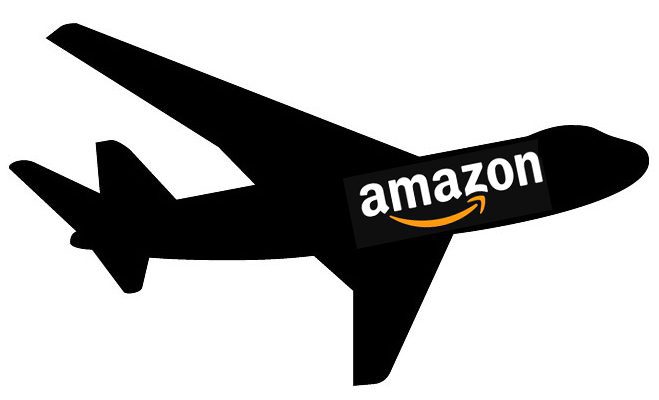Getting shipping right has become a critical component of retail business success. But as parcel services continue to hike up their shipping costs, retailers, especially SMBs, are scrambling to keep up. While most consumers expect free shipping today, offering it is a challenge for retailers, which have to raise prices or cut margins in order to provide this benefit.
Then there’s Amazon: the e-Tailer that keeps putting everyone else to shame. Other retailers are realizing that in order to remain competitive, they must be willing to test innovative shipping strategies and services.
Amazon: First Drones, Now Jets?
Amazon not only dominates e-Commerce, it’s now taking over the skies, with a recently announced freight operation deal with air cargo carrier Air Transport Services Group Inc. This new partnership will enable Amazon to reduce its reliance on traditional parcel services.
Advertisement
The deal between Air Transport Services and Amazon Fulfillment Services allows Amazon to lease 20 Boeing 767 aircrafts to ship goods. Now, Amazon is one step ahead in establishing its own delivery network — a move that could frighten carriers such as USPS, FedEx and UPS just as much as it could frighten retail competitors.
“Amazon and free shipping have changed the landscape for online retailers,” said Jeff Crouse, VP of SMB Shipping Solutions at Pitney Bowes, in an interview with Retail TouchPoints. “With carrier rate increases across the board, it has become even more critical for businesses to optimize their sending operations to compete in the borderless and connected world of commerce.”
Increased Shipping Rates Mean Expensive Order Fulfillment
In January, the United States Postal Service (USPS) increased its average shipping rate by 9.5% — from $5.02 in 2015 to $5.50 in 2016. This latest increase should have e-Tailers and SMBs thinking twice about how to manage their shipping and mailing operations. Hiking up shipping rates could turn valuable customers away, while doing nothing could result in profit losses.
“Many businesses can’t afford to offer free shipping without raising their prices or cutting their margin,” said Crouse. “Small and medium businesses in particular need to be very strategic in deciding how and when they offer incentives, such as free shipping, as they often don’t have the volume to negotiate discounted rates on par with Amazon. “
For retailers, fulfilling omnichannel orders is not inexpensive. Even during a mediocre holiday season in 2015, U.S. retailers spent approximately $540 million to deliver their products to customers on Cyber Monday alone, according to a study conducted by EKN Research in partnership with Aptos.
“This is a huge wake-up call to retailers,” said Noel Goggin, CEO and Culture Leader of Aptos, in a statement. “As traditional store-based purchases continue to decrease and omnichannel transactions continue to increase, ‘runaway’ order management and fulfillment costs have the potential to devastate the bottom line of retailers in virtually every category.”
Multi-Carrier Software Solutions Can Help Manage Spending
Retailers must re-evaluate their carrier strategies in order to compete with their peers or retail giants like Amazon. But because every parcel service has its own system, managing them all at once can be difficult for businesses. Retailers can no longer select just one carrier that offers the best volume discount. They must constantly analyze data on delivery performance and cost to ensure they are sending each package via the right carrier.
Crouse suggests that multi-carrier software solutions can help manage these choices. “These systems offer the ability to manage multiple carriers from one platform, giving businesses the information they need to select the best carrier for each package, with full tracking capabilities and visibility into the total cost of shipping from one integrated platform.”
According to Crouse, new online shipping solutions can:
- Facilitate multi-carrier management, which allows retailers to select the best carrier for each parcel based on a simple view of service level, cost and value;
- Initiate carrier pickup in real time from a desktop, tablet or mobile device;
- Automatically reconcile all sending charges to one account; and
- Improve the package receiving process, so inbound tracking becomes as convenient as outbound shipping.
Instead of worrying about how to compete with Amazon’s newest shipping strategies, retailers should focus on how they can simplify their own operations and manage costs. Innovative strategies such as multi-carrier software solutions can optimize sending, save retailers money and help them compete in the e-Commerce world.









